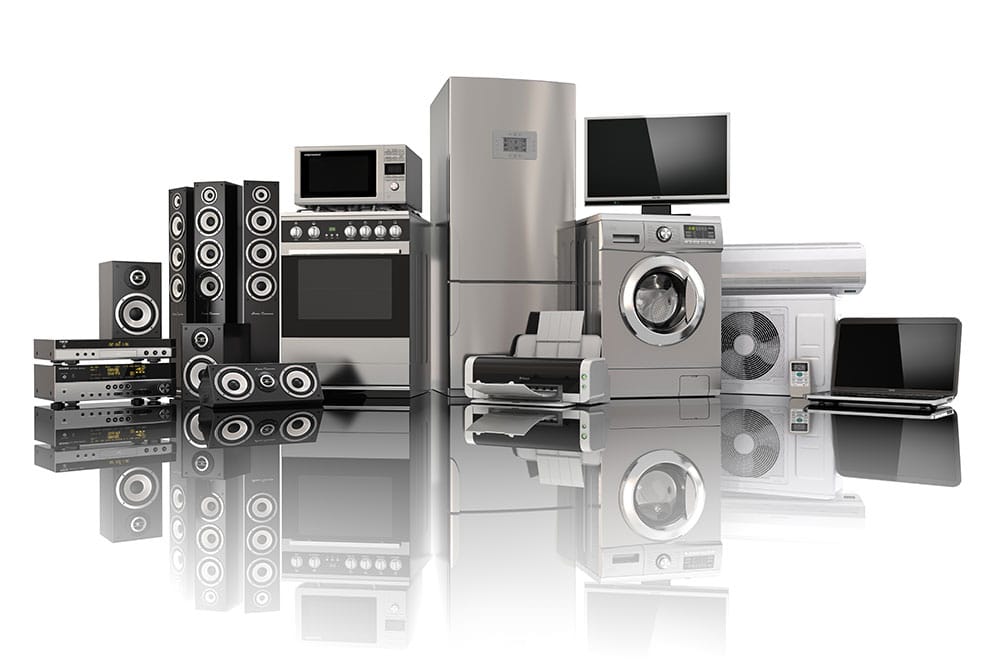Changes to Help You Reduce Your Carbon Footprint
All over the country, people are becoming more conscious of their carbon footprints, and they are looking for innovative ways to go green. People are also going green because it’s less expensive to operate efficient appliances. One of the most effective ways to reduce your carbon footprint is through whole home electrification.
What does this mean? Well, in some cases, people start from scratch and build all electric homes. In most cases, however, it involves replacing appliances that run on fossil fuels with electric ones.

Wondering how to get on the path to an all electric home? Well, the process starts with replacing your appliances with options that run on electricity, and eventually, you can complete the transition by investing in solar panels to generate your own electricity. Here’s what you need to consider.
1. Ductless Heat Pumps
The majority of energy used by your home is for heating and cooling. Replacing your oil of gas furnace with a ductless heat pump decreases your carbon footprint by up to 65%, and it can also cut your heating costs by about a third. This eco-friendly heating solution doesn’t rely on fossil fuels, meaning the switch instantly reduces your home’s carbon footprint.
Additionally, their energy-efficient design ensures that they consume as little electricity as possible. If you’re interested in whole home electrification, this is one of the first changes you should make as it’s the most significant.
2. Heat Pump Water Heaters
An electric water heater is a must if you’re interested in whole home electrification, but rather than buying a traditional electric water heater, you may want to consider a heat pump water heater. These systems transfer the heat needed to warm up your water, rather than generating it.
A heat pump water heater doesn’t rely on fossil fuels like a gas-powered one, and as explained above, they are also more efficient than traditional electric options. By extension, they help to lower greenhouse gas emissions significantly, and they also reduce your utility bills, resulting in long-term cost savings.
3. Electric Ovens and Ranges
Electric ovens and ranges are efficient, environmentally-friendly alternatives to gas or propane cooking appliances. They offer easy installation and relatively low operating costs, and they do not emit carbon monoxide or other greenhouse gases, meaning they reduce your carbon footprint.
4. All-Electric Clothes Dryers
By replacing your gas dryer with an all-electric one, you can save money and energy, while reducing your home’s carbon footprint. Notably, electric dryers use less energy and thus produce less carbon than gas dryers. Plus, they emit no pollutants in the form of emissions.
As an added bonus, all-electric dryers are easy to install, they operate quietly, and they are generally easier to maintain than gas alternatives. If you’re not ready to upgrade this appliance yet, consider hanging your laundry to dry. During the warmer months of the year, using a clothes line can save a significant amount of energy.
5. Solar Panels
In addition to upgrading your appliances to electric options, you should consider how you generate your electricity. In particular, you may want to add solar panels to your home.
Solar energy systems are the ideal solution for homeowners looking to reduce their carbon footprint significantly while also saving money. Solar energy is clean, renewable, and unlimited in supply. By installing solar panels on your roof or anywhere on your property that receives sufficient sunlight, you can produce the energy required to run your home while simultaneously reducing the amount of carbon your home emits.
Over time, a solar energy installation can pay for itself by lowering your electricity bills, and it can completely eliminate your home’s carbon footprint. Before investing in solar panels, consider your current and long term electrical needs. For example, if you plan on buying an electric car in the future, you may want to invest in extra panels to ensure you have the power you need.
Reducing Carbon Footprint Through Electrification
All kinds of actions such as riding your bicycle to work or not using a personal jet can help you reduce your carbon footprint, but electrifying your home is one of the most significant steps you can take. At N.E.T.R. Inc, we have helped countless clients get one step closer to whole home electrification by installing air source heat pumps in their homes.
High quality heat pumps from manufacturers such as Mitsubishi and Lennox can reduce your carbon footprint, but even more importantly, they improve the comfort of your home. Ready to learn more? Then, contact us today, and we’ll connect you with a comfort consultant who will answer you questions and help you select and install the ideal heat pump for your home.
